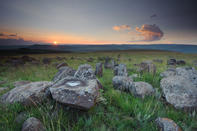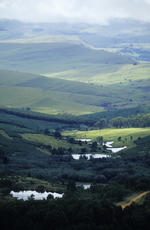Steenkampsberg Range
Dullstroom is located in the Steenkampsberg range and has its origins in the 1880s when Dutch settlers arrived. At this time the then President, Paul Kruger actively encouraged emigration to South Africa.

Farmers from Holland were sponsored by committees, to settle in the then Transvaal Province in South Africa. A company was formed in 1883, to liaise between the two countries, led by Wolterus Dull.
This company purchased two farms, Groot Suikerboschkop and Elandslaagte, for the new settlers to establish. The settlers by 1890 had established a small village. In 1892, Paul Kruger proclaimed Dullstroom as a town. It was originally called Dull’s-stroom, after Wolterus Dull and the Crocodile River that runs close to the town.
Trout Industry

During the Anglo Boer war of 1900, British soldiers occupied the town, and removed all the women and children to concentration camps in Belfast (now called eMakhazeni). The town was razed and many of the settlers died either in battle or in the concentration camps.
A stone memorial and remembrance garden in the town centre is a reminder of this fraught time. Post war some of the immigrants returned to rebuild the village, by 1920 eight stores had been established, and by 1921, Dullstroom was granted the title of a Town Council.
The trout industry came about in 1912, when J Gurr the postmaster from Lydenburg, surprisingly caught a fish that resembled a trout in the Dorps River. From this find, trout fingerlings were released in a few local streams from hatcheries from the Cape. By 1927 the fish were doing well and trout boxes were built at the old municipal dam, allowing the streams to be stocked with trout.
In 1965, a new municipal dam was built and stocked with 17,000 trout fingerlings. These hatchlings were the forerunners of the present day trout industry that Dullstroom is so well known for.